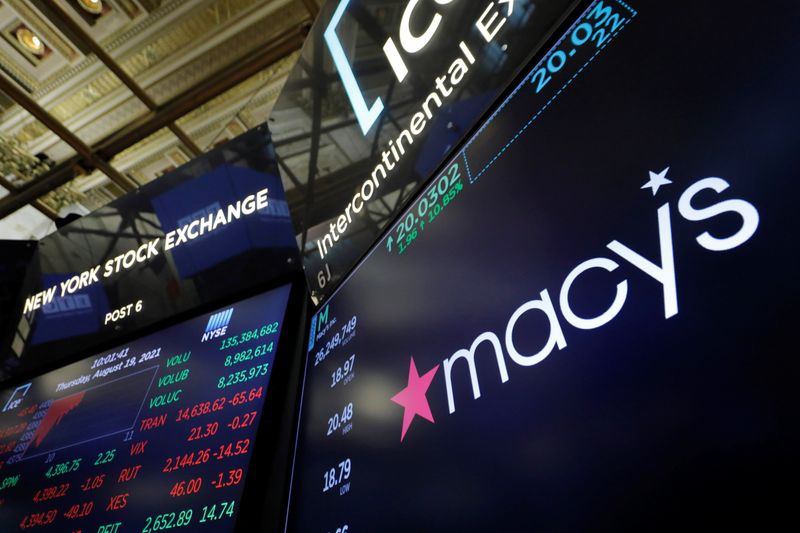NEW YORK (Reuters) -Recent gains in U.S. retailer shares could be put to the test in the coming days as top companies in the sector report quarterly results and investors hunt for clues about how well they have managed supply-chain problems.
Retail companies have had a strong run so far this month, with the S&P 500 retailing exchange-traded fund up about 10% compared with a roughly 2% gain for the S&P 500.
That has roughly coincided with upbeat signs as the world opens up after the global pandemic and looks to new treatments such as COVID-19 antiviral pills to keep infections in check.
The third-quarter earnings season is in the final stretch, with less than 10% of the companies in the S&P 500 still to report. A big chunk of those will be retailers, with many due to post results this week.
But whether retailers can sustain recent gains could depend on how well they have managed the global supply-chain crisis and other inflationary pressures because of the pandemic, which have raised additional concerns about the critical holiday shopping period.
Earlier on Tuesday, Walmart Inc raised its annual sales and profit forecast even as global supply-chain disruptions hit margins in the third quarter. Its shares were down about 2% on Tuesday morning.
At the same time, Home Depot Inc, helped by the strong housing market, beat quarterly sales estimates by nearly $2 billion, and its shares shot up by more than 4%.
Target Corp, Macy’s and Kohl’s are among a slew of others also expected to report this week.
“Traditionally, you want to be long retail going into Black Friday,” said Michael James, managing director of equity trading at Wedbush Securities in Los Angeles, referring to the day after the U.S. Thanksgiving holiday that unofficially marks the start of the holiday shopping season.
“That said, there are significant supply-chain unknowns,” he added. “Who managed to do well in spite of the supply-chain challenges? That’s the biggest question that’s going to be answered by each individual company.”
While reports need to be examined individually, investors want to see increased guidance from companies with strong recent gains, James said.
“Any whiff of disappointment is not being treated well,” he noted.
Some retailers likely have been able to raise prices to maintain margin levels.
A report from the U.S. Commerce Department on Tuesday suggested high inflation was not yet dampening spending. U.S. retail sales surged in October, likely helped by Americans who started their holiday shopping early because of supply shortages.
Of all S&P 500 companies that have reported, about 80% have beaten analysts’ expectations, and the forecast for year-on-year third-quarter earnings growth is now at 41.5%, up from the 29.4% seen at the beginning of October, according to IBES data from Refinitiv.
Consumer discretionary earnings growth, which includes many retailers, is estimated at 14.5% compared with 8% at the start of October, based on Refinitiv data.
Jharonne Martis, director of consumer research at Refinitiv, wrote in a report on Monday that e-commerce sales results will be watched to see if the move to online spending may be fading.
The latest third-quarter digital sales growth estimates suggest business volume is “holding up,” she said.
Expenses will be another key issue when investors scrutinize results.
“I caution whether it’s going to be a slam dunk,” said Jake Dollarhide, chief executive officer of Longbow Asset Management in Tulsa, Oklahoma, noting that year-over-year comparisons are going to be “hard to beat going forward.”
“All of these companies are trying to build up cloud platforms, their delivery service, automations, robotics … so even if sales are at record levels, I would say expenses are at record levels.”
(Reporting by Caroline Valetkevitch in New YorkEditing by Richard Pullin and Matthew Lewis)
























